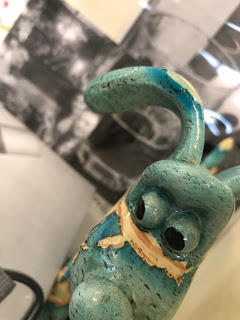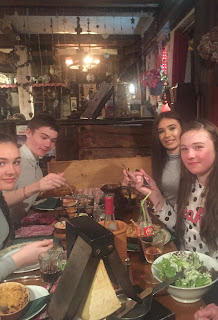The next stage of initial thoughts involved establishing a link from the words generated by each objects stream of consciousness. I was then able to establish a link either by similar or repeating words generated through this process. The words that link can include, lost, Geography, surroundings, directions and family. This led on to be able to consider how this link relates to concepts such as location, alphabet, time, category and hierarchy.
The next stage discussed expectations of a publication and specifically a photograph. Next I considered how these expectations could be challenged, reversed or manipulated. Initially I considered altering the orientation of photographs as they usually have a uniform orientation either portrait or landscape. This could be challenged either by a diagonal orientation or playful manipulated orientation to represent the disfigurement and confusion feeling you have when being lost.
Other Ideas: 1-26
1. View finder shaped photos - the photos cut into shapes of countries to illustrate map illustrating directions an item you may need if lost.
2. Photo cut to shape e.g. skis
3. Photo cropped - bits missing symbolise when you are lost you don't know your location
4. Draw objects scattered and joined by dotted line often seen to illustrate a map
5. Photograph each object on a higher/lower step - to represent the different parts of your surrounding separated because you don't know your surroundings if you are lost.
6. Photograph objects in a homely and outside environment - this compares the feeling of home and an unfamiliar environment
7. Fold photograph into the shape of slope or mountain - the place I got lost
8. Tear bits to hide elements of photograph
9. Create marks hiding elements of the photograph
10. Use collage to hide elements of photograph
11. Storyboard 1 object first adding another object each photograph until all five objects are in one photograph
12. Digitally remove elements of a photo using Photoshop
13. Blur part of a photo
14. Page folded like a map
15. Photograph objects in light and dark conditions
16. Square collage grid of photographed objects with a few squares blanked out
17. One page crumpled up
18. Map symbols overlaying image
19. 3D map symbols created using card stuck on top of photograph
20. Drawing the objects spread out on tracing paper.
21. Folded colour A4 page insert cut into the shape of mountain overlaying photograph
22. 'X' marks the spot tracing paper overlay
23. Use collage to reconstruct the entire photograph.
24. Postcard layout insert made from photograph of objects
25. Hands or hand covering photograph
26. Objects placed outside the background being a bus stop
Using Photography to experiment with composition challenging orientation:
Original Photos:





































No comments:
Post a Comment